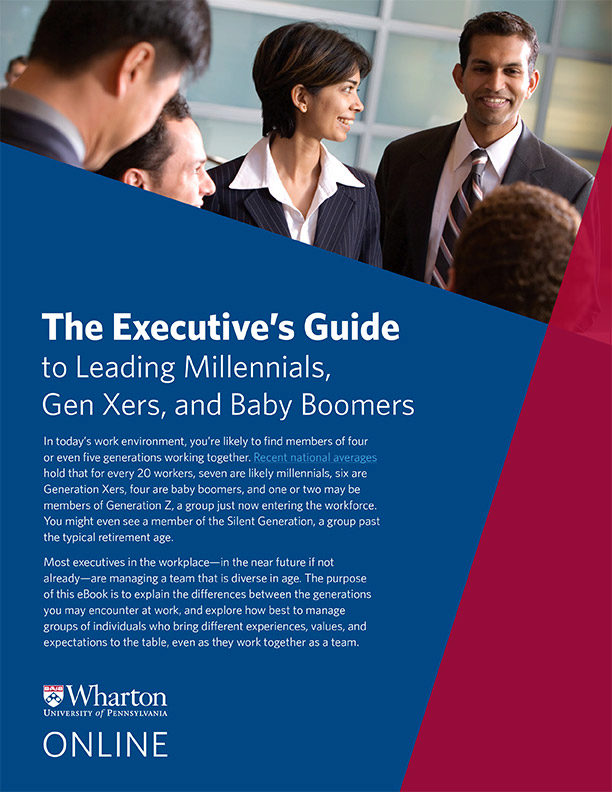
Companies do more than make products or create services. Businesses impact society, the environment, the economy and social change.
Corporate social responsibility is the conscious, stated effort a company makes to be socially accountable. Everything from how a company operates its manufacturing plants, to how it contributes to local communities, to the packaging a business uses for its products impact a company’s corporate social responsibility efforts. A business that prioritizes corporate social responsibility aims to positively contribute, instead of taking away or harming.
One way to communicate corporate social responsibility efforts is by choosing a social mission for your business to promote and support. Here’s why having a social mission is important and how to create one for your business.
What Is a Social Mission?
A social mission is a cause that benefits society, the economy and/or the environment in various ways. For example, CommonBond, a student loan provider, has a core social mission the business calls its “Social Promise.” The company partners with Pencils of Promise to provide schools, teachers and technology to young students in the developing world. CommonBond CEO and cofounder David Klein says the company’s social mission is the core of the company and what drives its business.
Another notable brand with a social mission is TOMS, which brands itself as the “original One for One” company. When it launched 13 years ago, the company promoted its donation of one pair of shoes to someone in need for every pair bought. Today, the company donates $1 for every $3 it makes in net annual profits to various nonprofit organizations.
Smaller companies can have social missions, too. Paper Clouds Apparel, a clothing and accessories company, features designs from artists with special needs on its products. Half of the net proceeds from those products go back to nonprofit organizations that relate to the artists’ special needs.
When a company has a social mission, it communicates to customers, employees and stakeholders the values that drive it. Customers feel like they make a difference when they purchase from the company. Employees know their work is contributing to certain causes. And investors can feel good supporting and promoting those companies.
Benefits of a Social Mission
Having a social mission is a way to meaningfully contribute to the world. When communities are supported and individuals are empowered through social good initiatives, that can create a ripple effect of positive change.
In addition to the benefits that a social mission provides to a cause, having a social mission is good for business. Consider:
- What you value influences sales. A recent Cone Communications CSR study found 78% of American consumers want companies to address important social justice issues. Additionally, 87% will purchase because a company advocated for an issue that was important to them, and 76% will not purchase from a company if it supports an issue that doesn’t match the consumer’s beliefs. Company values are particularly important to younger generations. Enso’s 2018 World Value Index found the top-performing brands for Millennials, the largest generation of consumers, are brands with clear social missions.
- Employees are happier when their work is meaningful. The recent Meaning and Purpose at Work study by BetterUp found employees will give up 23% of total future lifetime earnings in exchange for work that is always meaningful. A social mission can give work more meaning.
- A social mission inspires marketing. A social mission provides countless marketing options. It can be weaved into packaging, in social media and blog content, and in advertising strategies.
A strong social mission can also influence your partnerships with suppliers. You may attract suppliers whose values align with yours, or you may be able to form new partnerships based on similar values.
It’s likely that your most successful competitors embrace a social mission. A 2018 report by the Governance & Accountability Institute, Inc., found 86% of S&P 500 Index Companies publish sustainability/responsibility reports. Having a social mission can boost sales, increase customer loyalty, improve employee engagement and retention, and shape marketing efforts.
Developing a Social Mission
Your company’s social mission should align with your existing company goals and agenda. If your business has a solid company mission statement, that’s a great place to start for ideas for a social mission.
Avoid social missions that are polarizing, like politics-related missions, or ones that are too niche. You want to reach a broad audience and support a feel-good cause. Consider causes that boost economic impact, support the environment and/or enhance communities.
Download our eBook: The Executive’s Guide to Leading Multi-Generational Teams
Many executives manage teams that span five generations: The Silent Generation, Baby Boomers, Generation X, Millennials, and Generation Z. Download our free eBook, “The Executive’s Guide to Leading Multi-Generational Teams,” for practical advice on how to communicate with, motivate, and manage each generation.
Implementing a Social Mission
To see the benefits of a social mission, it should be an integral part of a corporate identity. The social mission should be:
- Clearly communicated. Include the social mission on a corporate website and other websites representing the business, like social media sites. The social mission should be a part of brand guidelines and marketing materials, as well as explained in employee onboarding. Consider sharing a message about your social mission on product packaging.
- Properly invested in. Aim to make a significant difference through an investment that’s realistic for your company. There are ways to support a social mission beyond money. For example, a restaurant that makes food bank contributions its social mission may commit to a certain number of employee volunteer hours a month to a local food bank.
- Promoted regularly. Talk about how you’re contributing with your social mission. You might choose to write press releases with your latest contributions, or speak about them at company-wide meetings or in an online employee portal. Get more customers involved in your social mission by giving them a way to get involved, too, such as by providing donations or by promoting the cause’s events on your social media channels.
Your business needs to engage with the social mission regularly to keep it at top of mind for customers and employees. If you say you have a social mission and then make infrequent or insignificant contributions, you could experience negative sentiment instead.
Can You Have More Than One Social Mission?
Your business can certainly support multiple causes. Keep in mind that having more than one social mission can introduce some disadvantages, though. These include:
- Your core values become diluted.
- Your contributions to each individual organization become less impactful, since there are more to focus on.
- You risk having customers or employees who don’t support one of your social missions, which can turn them off altogether.
If you want to support multiple organizations, it can help to have a singular theme drive your social mission. For example, if you want to make mental health your social mission, you can support various nonprofits in the mental health sector.
Keep in mind that as attention spans continue to be lured into increasing directions, a clear social mission may be more recognizable, memorable and impactful.
Make a Social Impact With Your Business
Corporate social responsibility is constantly becoming more important to consumers, employees and investors today. A social mission provides your business with purpose. Contributing to a worthy cause can boost morale and make work more meaningful for business owners, too.
If you’re a leader looking for more business-growing tips like these, download the free e-book, “The Executive’s Guide to Leading Millennials, Gen Xers and Baby Boomers.”




